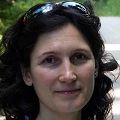Remote Sensing-Based Urban Planning Indicators
A special issue of Remote Sensing (ISSN 2072-4292). This special issue belongs to the section "Urban Remote Sensing".
Deadline for manuscript submissions: closed (30 September 2020) | Viewed by 78500
Special Issue Editors
Interests: urban remote sensing; urban modelling; spatial statistics; urban planning; slum mapping; deprived area mapping
Special Issues, Collections and Topics in MDPI journals
Interests: urban studies; urbanization; urban deprivations; spatial inequality; quality of life; urban vulnerabilities; urban patterns; urban governance; urban infrastructures
Special Issues, Collections and Topics in MDPI journals
Interests: remote sensing; machine learning; deep learning
Special Issues, Collections and Topics in MDPI journals
Special Issue Information
Dear Colleagues,
Urban Planning deals with complex tasks that have to be carried out within a multi-disciplinary and multi-stakeholder environment. More specifically, it is concerned with the regulation of land uses, the built environment and the development of urban areas including housing, infrastructure and urban services. Urban Planning also needs to balance competing interests between economic development, urban environmental conditions and social needs and design strategies for short- and longterm developments as well as sudden events and shocks.
Strategic urban development focuses on numerous normative goals aspiring to develop sustainable, inclusive, competitive, resilient and compact cities and satisfy the needs of different groups (e.g., age, gender, income and cultural groups). In a typical planning process, planners explore, analyze, design, implement and assess the outcome of urban development plans and strategies. These planning activities (exploring - analyzing - designing – implementing – evaluating - monitoring), iterative in nature, require relevant tools, instruments and information to analyze and assess potential outcomes, both in terms of benefits and negative effects. Tools are for instance well-designed indicators to measure and monitor the state of urban aspects such as the rate of land consumption, land use patterns, environmental conditions and exposure, public health, access to services or urban deprivation, as they allow to understand and discuss the complexity of the urban development process, key to urban planning and decision making.
In particular, rapidly developing cities in resource constraint environments face considerable challenges to support urban planning processes at various scales with well-designed indicators as well as adequate data to measure these indicators (e.g., ranging from a detailed/local level to metropolitan level indicators). However, such indicators and data are important for urban planning and decision making and the effective communication within a multi-stakeholder environment. Given the high spatial and temporal resolution and coverage, remote sensing can supply relevant base data to support the development, measuring and monitoring of urban indicators at different scales. Remote sensing not only provides 2D, but also 3D information that allows to analyze vertical conditions. Furthermore, remote sensing data cover historic time spans to analyze temporal dynamics and therefore support simulations and scenario building. Moreover, remote sensing data are becoming more widely available and accessible.
This special issue seeks contributions to create a broad overview on the scope of urban remote sensing data, methods and applications in support of urban planning indicators, both in the Global North and South.
Contributions include, but are not limited to, the following:
- Urban land consumption rates, open spaces, green spaces, built-up densities and their temporal dynamics, e.g., supporting urban green and open space planning.
- Urban growth and land use patterns and changes and the interaction with urban infrastructure provision, e.g., supporting urban land use planning.
- Urban population modelling, e.g. urban population densities and dasymetric modelling.
- Urban 3D and 4D modelling using data of various scales, e.g., supporting urban design and scenario development.
- Urban environmental issues (climate, air, water and land) and their dynamics at various urban scales, e.g., supporting urban environmental planning.
- Urban infrastructure and urban services and their interaction with the general urban and land use development, e.g., supporting urban upgrading projects.
- Urban exposure, vulnerability, resilience and sustainability, including urban hazards and risks, e.g., supporting disaster risk reduction.
- Urban social and economic aspect, e.g. inclusion and deprivation, e.g., the role of remote sensing to provide social and economic indicators for urban development plans.
- Urban health and their linkage with urban environmental exposure, urban patterns, population distribution and dynamics, e.g., supporting urban public health planning.
- Critical contributions with regard to measuring indicators of the Sustainable Development Goal 11 or the Sendai Framework.
Dr. Monika Kuffer
Prof. Dr. Karin Pfeffer
Dr. Claudio Persello
Guest Editor
Manuscript Submission Information
Manuscripts should be submitted online at www.mdpi.com by registering and logging in to this website. Once you are registered, click here to go to the submission form. Manuscripts can be submitted until the deadline. All submissions that pass pre-check are peer-reviewed. Accepted papers will be published continuously in the journal (as soon as accepted) and will be listed together on the special issue website. Research articles, review articles as well as short communications are invited. For planned papers, a title and short abstract (about 100 words) can be sent to the Editorial Office for announcement on this website.
Submitted manuscripts should not have been published previously, nor be under consideration for publication elsewhere (except conference proceedings papers). All manuscripts are thoroughly refereed through a single-blind peer-review process. A guide for authors and other relevant information for submission of manuscripts is available on the Instructions for Authors page. Remote Sensing is an international peer-reviewed open access semimonthly journal published by MDPI.
Please visit the Instructions for Authors page before submitting a manuscript. The Article Processing Charge (APC) for publication in this open access journal is 2700 CHF (Swiss Francs). Submitted papers should be well formatted and use good English. Authors may use MDPI's English editing service prior to publication or during author revisions.
Keywords
- urban planning
- urban indicators
- urban environment
- social and economic indicators
- urban growth
- urban dynamics
- urban land use
- structure types
- urban hazards







